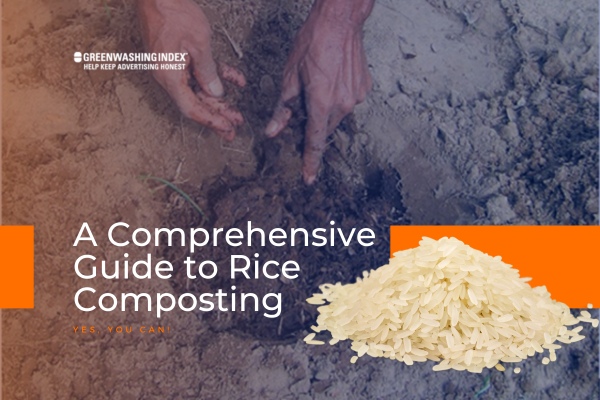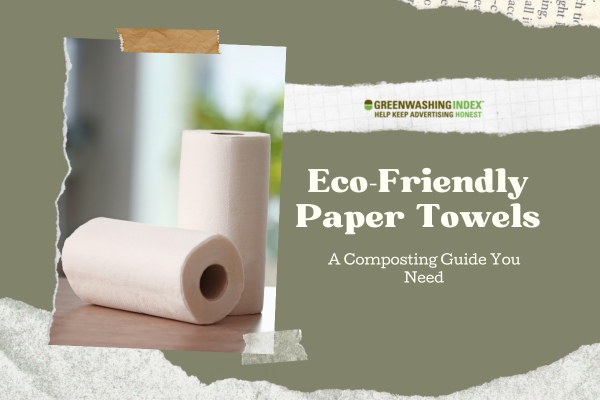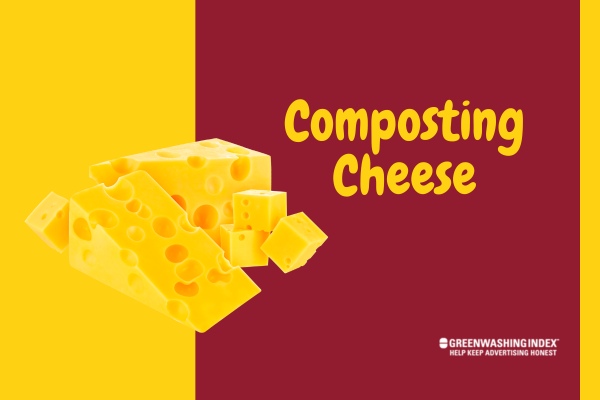Have you ever wondered if rice composting was a real thing or just an urban legend? It’s a topic that’s been popping up more frequently on sustainable living forums, with plenty of interest surrounding it. Rest assured, there’s more than just idle chit-chat to this. In fact, rice composting has become an important part of sustainable living.
The short answer would be—yes, you can indeed compost rice! Whether it’s cooked or uncooked leftovers from your meal or waste from rice-based products in your household, these organic materials can be efficiently decomposed at home into nutrient-rich fertilizers for your garden plants.
Here’s What You’ll Unlock Today:
- Unearth the fundamentals and benefits of home composting with rice.
- Discover the step-by-step process for successful and efficient rice composting.
- Explore common mistakes to avoid in the journey of compostable rice product conversion.
- Gain insights about factors influencing the success rate of your home-based recycling efforts.
- Troubleshoot common issues related to turning leftover rice into valuable natural fertilizers.
The Fundamentals of Rice Composting
Grasping the fundamentals of rice composting allows us to reduce waste actively, contribute to the ecosystem, and nurture our gardens organically. The process involves the natural decomposition of leftover rice, triggered and sustained by environmental factors like oxygen, heat, and humidity, which encourage microbial activity.
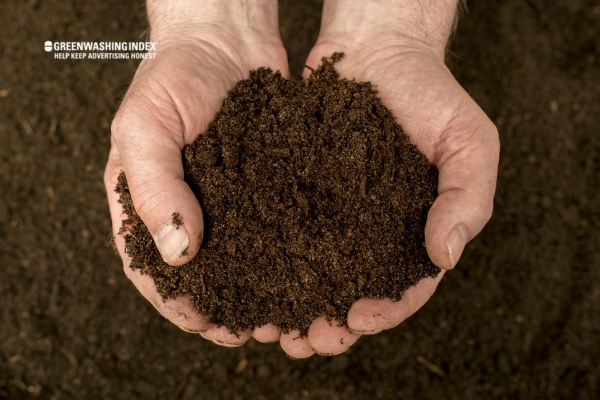
Rice composting is a method of recycling leftover rice and turning it into valuable nutrient-rich soil. This process involves deliberate decomposition under controlled conditions, where microbes break down the organic matter in an environment rich in oxygen, heat, and humidity. Not only does rice composting allow us to dispose of unwanted rice waste responsibly, but it also contributes significantly to sustainable living.
With composted rice serving as a rich source of nutritional elements for soil enrichment, it provides an impressive organic alternative to synthetic fertilizers. These nutrients fuel plant growth magnificently while improving soil structure.
Benefits of Rice Composting
Diving deeper into the advantages of this eco-friendly practice:
- Rich Soil Enricher: One major benefit offered by composted rice is its ability to enrich garden soil. The leftovers transform into dark, crumbly material teeming with nutrients essential for plant growth. As such it improves soil structure and water-holding capacity making roots healthier and drought-resistant.
- Kitchen Waste Minimization: Next up – the minimization of kitchen waste! An average American family wastes loads of food every year that could otherwise be recycled. By participating in this healthy practice, you would be putting substantial parts of your organic food wastage to good use!
- Cutting Down Incineration Impact: Combusting garbage usually releases unhealthy pollutants, including harmful CO2 emissions, which again gets us cycling back unwillingly towards global warming! So why not simply choose this humble recycling alternative?
- Healthy Microbial Activity: Finally, rice compost carries beneficial microbes that can promote plant immune response strengthening plants against disease!
How to Compost Rice?
A lot of people seem surprised when they hear you can compost rice. Yes, you heard that right! Rice composting is a thing and it’s super easy to do. Let me guide you through an easy-peasy, step-by-step process on how to do home composting with rice, and also highlight common mistakes beginners often make in this journey.
The Right Process
Composting rice can give your garden a nourishing boost while contributing substantially to earth-friendly waste management at home. So let’s get started!
- Collect Your Rice: After the meal is done, don’t throw away that leftover rice! Scoop it up and toss it into your compost bin.
- Green-Brown Balance: The key to successful home composting lies in balancing your ‘greens’ (veggie scraps, coffee grounds, and our star of the day—rice) with ‘browns’ (dry leaves, straw, paper). Aim for a 1:3 ratio of greens to browns.
- Turn It Well: Regularly turning over your compost heaps accelerates decomposition by allowing better air circulation—a treat for those decomposing microorganisms working hard in there!
- Patience Pays Off: Let nature take its course now; let me reassure you that the magic of transforming those humble rice grains into nutrient-rich organic fertilizer is well worth the wait!
Common Mistakes in Rice Composting
Alright then! Now that we’ve figured out the basic process let’s steer clear of these common mistakes during our rice-composting journey:
- Overloading Greens: Adding too much green material or food waste such as rice can cause an offensive odor due to anaerobic decomposition—turn regularly for efficient oxygenation!
- Composting Cooked Rice? Caution! While raw rice decomposes beautifully in home compost bins; cooked white or brown rice is also compostable, but if seasoned with oil or spices can attract pests.
- Ignoring the Moisture: Maintaining moisture is critical—composting materials should feel like a squeezed-out sponge. Neither too dry (slows down decomposition) nor soggy (leads to bad odor and slows decomposition).
- Not Checking the Temperature: A healthy compost bin heats up due to microbial activity. No heat may indicate that your pile isn’t ‘cooking’ well— consider adding some more ‘greens’.
Fine-tuning these factors will make your rice composting process more effective and rewarding! Remember, every contribution, no matter how small, counts when it comes to sustainable living practices.
Factors Influencing Successful Rice Composting
Composting rice involves breaking down the organic material to create nutrient-rich soil amendments. To make this process successful, certain factors should be taken into account:
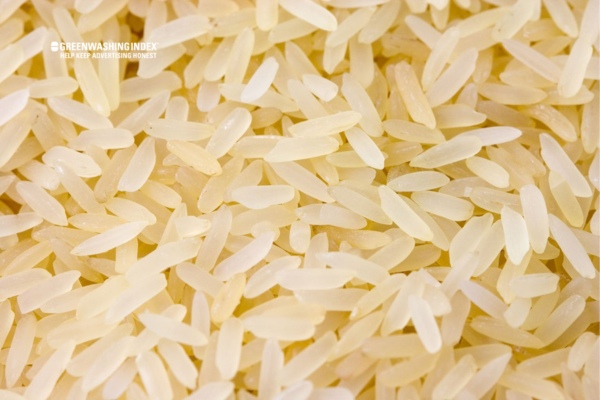
- Moisture Level: Rice composting requires a balance in moisture content. The compost pile must be damp like a wrung-out sponge. Too much water will cause anaerobic conditions and prevent proper decomposition, while too little will slow down or halt the composting process.
- Temperature: The compost pile should maintain a warm temperature to encourage the activity of microbes responsible for breaking down the rice. A hot and active compost pile may reach temperatures between 130-160 degrees Fahrenheit (55-70 degrees Celsius).
- Aeration: Introducing air into the compost pile is crucial as it provides the oxygen needed by aerobic microbes to thrive and break down materials efficiently. Turning or stirring the compost regularly prevents compaction and promotes even decomposition.
- C:N Ratio (Carbon to Nitrogen Ratio): For optimum decomposition, there needs to be a good balance of carbon-rich materials (‘browns’) and nitrogen-rich materials (‘greens’). Rice, which is high in carbohydrates, represents a source of carbon; hence it should be mixed with nitrogen sources like food scraps or manures.
- pH Level: Proper pH levels are necessary for microbe activity in rice composting; typically aiming for slightly acidic to neutral pH is desirable (around 6-7).
- Microbial Inoculants (optional): Adding pre-existing mature compost or commercial microbial inoculants can introduce beneficial organisms that help kick-start the decomposition process.
Types of Rice for Composting
When it comes to types of rice that you can add to your compost, several factors need consideration:
- Cooked vs Uncooked Rice:
- Cooked Rice: It can attract pests if not managed properly since it already contains moisture and can ferment or mold quickly.
- Uncooked Rice: Although dryer is thus less likely to attract pests initially, uncooked rice might take longer to break down due to harder grains.
- White vs Brown Rice:
- White Rice: This has had its husk, bran, and germ removed during processing so may lack some nutrients but still serves as an effective carbon component in your mix.
- Brown Rice: Contains more nutrients compared with white rice since it retains its bran layer but might also decompose at a slower rate due to its increased oil content that resists breakdown.
- Other Varieties:
- Organic Varieties: Preferable because they are free from potential pesticide residues that could harm microbial life within your pile.
It’s essential when adding any kind of rice into your compose that you mix it well with various other green forms of waste such as vegetable scraps which provide nitrogen – this ensures balanced nutrition for those microorganisms doing all hard work within your heap!
Ideal Weather & Environment Conditions
Composting isn’t a one-size-fits-all task—especially when it involves specific materials like cooked or uncooked rice! Let me give you a look into how weather and environmental conditions can significantly influence your home composting project.
- Temperature: Microorganisms responsible for breaking down organic matter perform best when warmth is abundant. The ideal range falls between 120°F and 160°F (48°C – 71°C). If you live somewhere with cooler temperatures, consider placing your compost pile or bin in a sunlit area during daytime hours.
- Moisture: Like all living things, microbes need water! But too much water equals a slowed-down breakdown process and potential odor problems. Aim at keeping your compost as damp as a wrung-out sponge.
- Aeration: Air circulation is crucial in maintaining the balance of oxygen-loving microbes that help break down your compost. Turning or stirring up your compost pile/bins every few days is a proven way to promote aeration.
Interactions in Your Compost Bin
When delving into the world of rice composting, it’s important to understand what’s happening inside your compost bin. The process isn’t simply a matter of leaving your rice waste and hoping for the best. Rather, two critical elements play significant roles – microorganisms and the balance between green and brown materials.
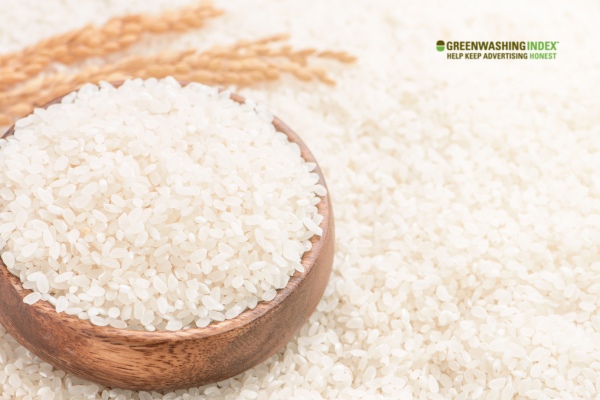
Role of Microorganisms
Microorganisms act as the primary agents in decomposing your rice waste. Various types of bacteria, fungi, and other minute creatures break down organic matter like leftover rice into nutrient-rich compost. Here’s how they do it:
- Bacteria: These microscopic organisms are key players in breaking down complex organic materials into simpler ones. They thrive on moisture and warmth.
- Fungi: Fungi come into action when bacteria have done their initial job. They are particularly good at breaking down more fibrous materials.
- Actinomycetes: These organisms give compost its earthy smell. They work hand-in-hand with fungi to decompose tough plant tissue.
Understanding these critters is crucial since providing them a healthy environment translates into a successful rice composting process.
Balancing Green and Brown Materials
While venturing through your rice composting journey, you’ll encounter terms such as ‘greens’ and ‘browns’. These aren’t literal colour references but signify different types of waste you include in your compost bin:
- Greens provide nitrogen to the microorganisms essential for their growth and reproduction. This category includes food scraps like vegetable peels or our focus – leftover rice!
- Browns offer carbon that serves as an energy source for microbes. Examples would be leaves or shredded newspaper.
Achieving balance between greens (high-nitrogen) & browns (high-carbon) is downright crucial during the compositing process:
- Too many gardens can cause your compost to become overly moist and smelly.
- Overloading on browns might leave your compost too dry and slow down the composting process.
A common rule of thumb is to use a 2:1 ratio, i.e., for every bin-full of greens you add, throw in two of browns! This balance provides microorganisms with an optimal environment to thrive while breaking down your rice waste efficiently.
FAQs
Can I compost uncooked rice?
Absolutely! You can compost both cooked and uncooked rice. However, keep an eye out as uncooked rice may take a longer time to break down.
Does adding rice slow down the composting process?
Not necessarily. Although rice is denser than many other compostable materials, when properly balanced with “brown” and “green” material, it should not significantly slow down the process.
How long does it take for rice to decompose in compost?
The decomposing time varies based on conditions like moisture and temperature but generally, in optimal conditions, it should take about 1-2 months for the rice to decompose fully.
Conclusion
After diving deep into rice composting, I’m excited about the potential it has to offer. Not only does it assist in reducing waste, but it’s also a great way of creating nutrient-rich soil for our gardens.
However, the process needs careful attention – from selecting the right type of rice to maintaining proper balance in your compost bin. The importance of microbes and the effects of weather conditions on composting efficiency shouldn’t be taken lightly either. Undeniably, with some effort and patience, home composting with rice can be a game-changer.

